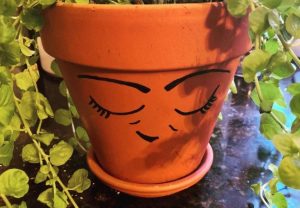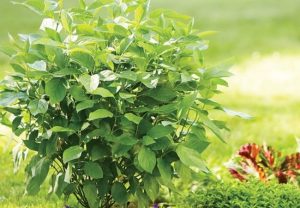Learn everything you need to know for proper care of the Umbrella Tree. Our comprehensive guide covers watering, lighting, pruning, and more to keep your plant healthy and thriving.
Are you looking for a stunning houseplant that’s easy to care for? Look no further than the umbrella tree! This tall, leafy plant is perfect for adding a touch of tropical flair to your home. In this guide, we’ll cover everything you need to know about umbrella tree care, from watering to pruning and beyond.
Here’s an information chart for the Umbrella Tree:
| Attribute | Details |
|---|---|
| Botanical Name | Schefflera actinophylla |
| Common Name | Umbrella Tree, Octopus Tree |
| Plant Family | Araliaceae |
| Hardiness Zone | USDA zones 10-12 |
| Sun Exposure | Bright, indirect light to partial shade |
| Soil Type | Well-drained, loamy soil |
| Watering | Moderate; allow the top inch of soil to dry out between waterings |
| Growth Habit | Upright, evergreen tree |
| Height/Spread | 8-15 feet tall indoors / 10-50 feet tall outdoors, 6-10 feet wide |
| Special Features | Attractive foliage, easy to grow, tolerates low light conditions, suitable as a houseplant |
What is an Umbrella Tree?
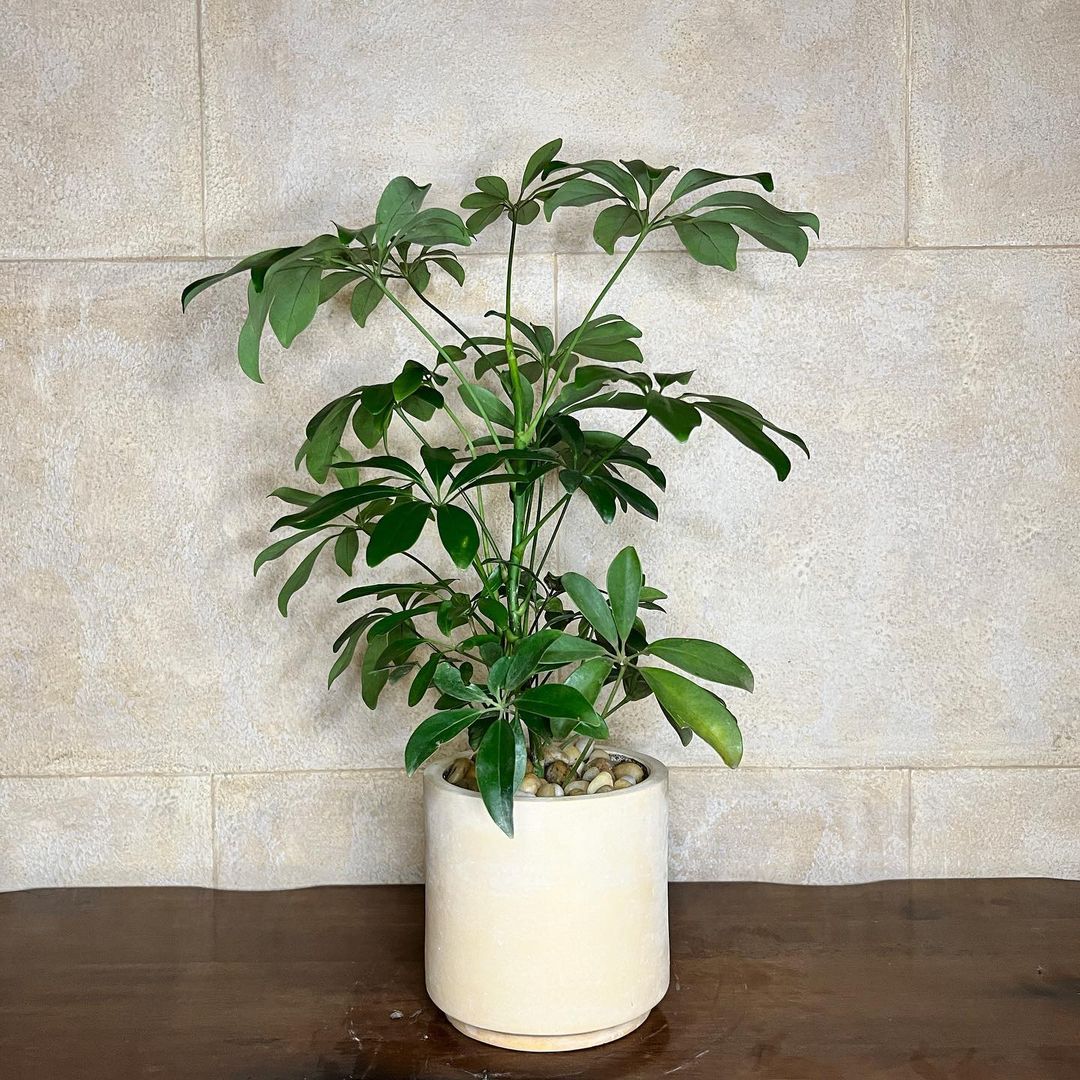
The umbrella tree, also known as Schefflera or dwarf umbrella tree, is a popular indoor plant. It gets its name from its large, glossy leaves that spread out like an umbrella. These trees can grow quite tall in the wild, but as houseplants, they usually stay between 4 to 8 feet high.
Umbrella trees are native to Taiwan and southern China. In their natural habitat, they can reach up to 40 feet tall! But don’t worry – your indoor umbrella tree won’t outgrow your home.
Why Choose an Umbrella Tree?
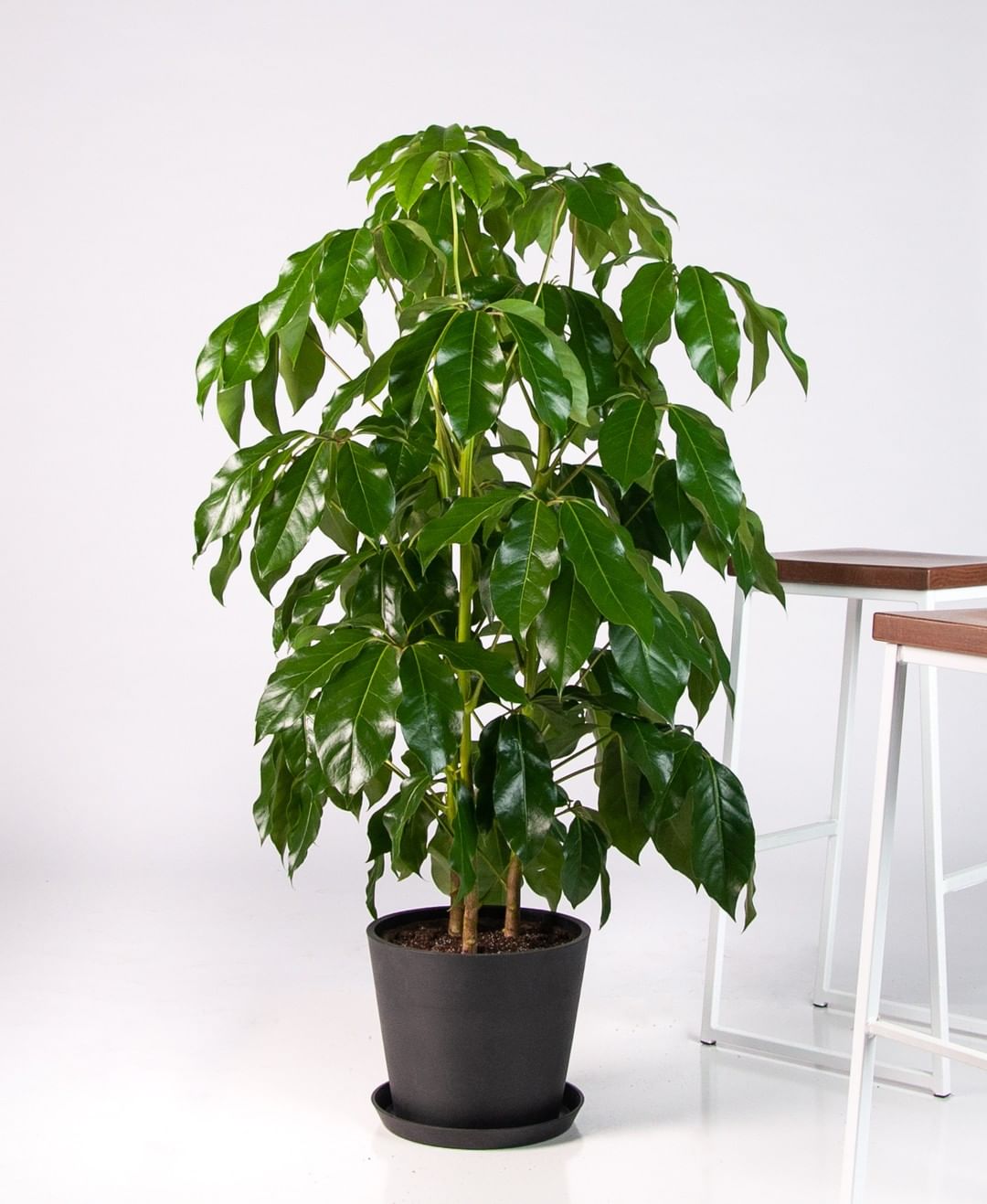
There are many reasons to add an umbrella tree to your plant collection:
- Low maintenance: These plants are tough and don’t need much fuss.
- Air-purifying: They help clean the air in your home.
- Long-lasting: With proper care, umbrella trees can live for many years.
- Attractive: Their big, shiny leaves make a bold statement.
Umbrella Tree Care: The Basics
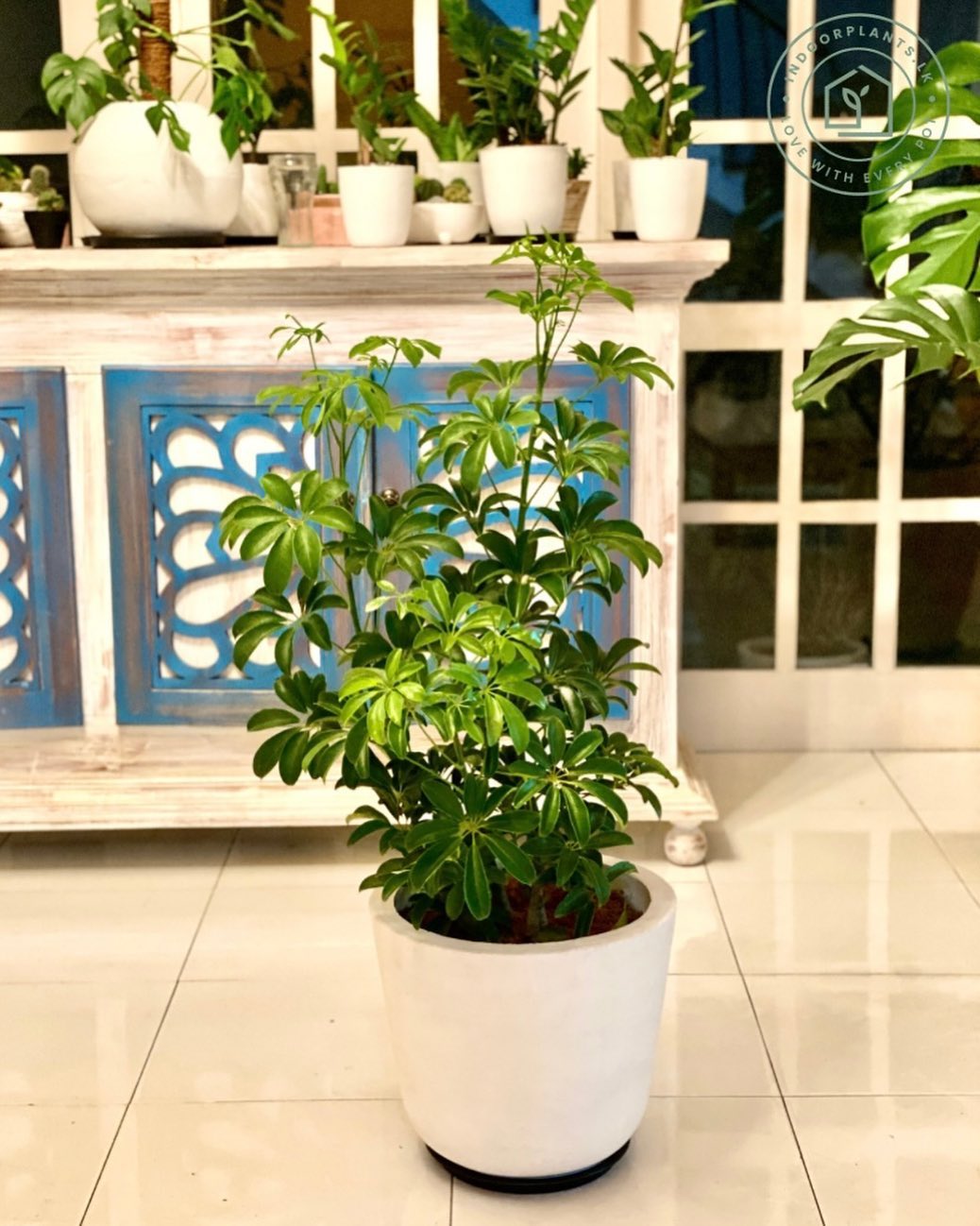
Let’s dive into the essential care tips for your umbrella tree.
Light Requirements
Umbrella trees love bright, indirect light. A spot near a window with filtered sunlight is perfect. Too much direct sun can scorch the leaves, while too little light can make the plant leggy and weak.
If your home doesn’t get much natural light, don’t worry. Umbrella trees can adapt to lower light conditions. They might grow more slowly, but they’ll still thrive.
Watering Needs
When it comes to watering, umbrella trees prefer to be kept slightly moist. Water your plant when the top inch of soil feels dry to the touch. In spring and summer, this might mean watering once a week. In fall and winter, you can water less often.
Be careful not to overwater! Too much water can lead to root rot, a common problem for umbrella trees. Make sure your pot has drainage holes to let excess water escape.
Soil and Fertilizer
Use a well-draining potting mix for your umbrella tree. A mix designed for indoor plants works well. These plants aren’t too picky about soil, but they do like it to be rich in nutrients.
Feed your umbrella tree with a balanced, water-soluble fertilizer every month during the growing season (spring and summer). In fall and winter, you can cut back to fertilizing every two months.
Temperature and Humidity
Umbrella trees prefer warm temperatures between 60°F and 75°F (15°C to 24°C). They can handle short periods of cooler temps, but prolonged cold can damage the leaves.
These plants also like humidity. If your home is dry, consider misting the leaves regularly or placing a humidifier nearby. You can also set the pot on a tray of pebbles filled with water. As the water evaporates, it’ll increase the humidity around the plant.
Pruning and Maintenance
Pruning helps keep your umbrella tree looking its best. You can trim off any dead or yellowing leaves as you notice them. If your plant is getting too tall, you can cut back the main stem to encourage bushier growth.
Spring is the best time for major pruning. Use clean, sharp scissors or pruning shears to make clean cuts. Don’t worry – umbrella trees are resilient and can handle a good trim!
Repotting Your Umbrella Tree
As your umbrella tree grows, it may need a bigger home. Repot your plant every 2-3 years, or when you notice roots growing out of the drainage holes.
Choose a pot that’s 1-2 inches larger in diameter than the current one. Be gentle when removing the plant from its old pot. Shake off some of the old soil and place it in the new pot with fresh potting mix.
Common Problems and Solutions
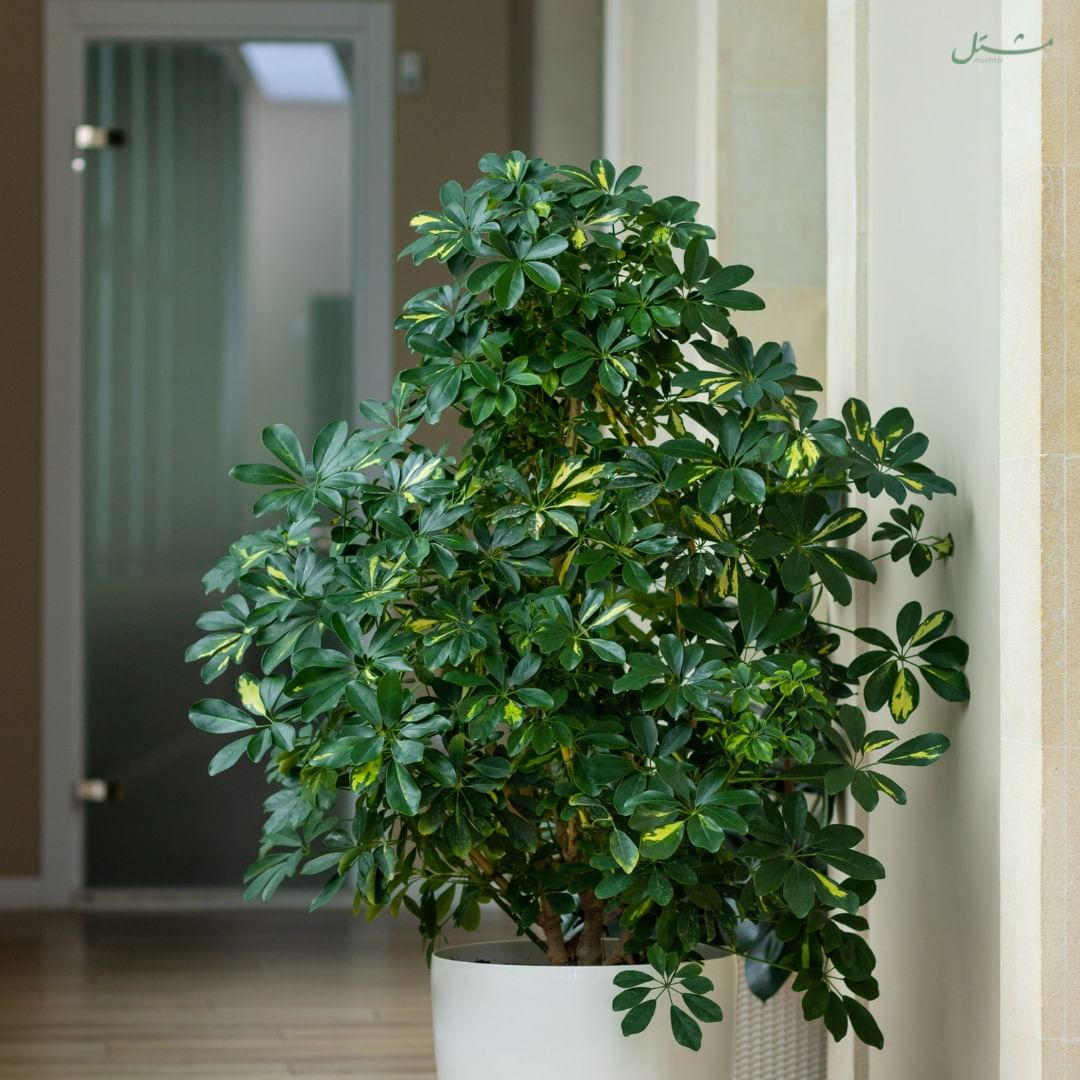
Even with the best care, your umbrella tree might face some issues. Here are some common problems and how to solve them:
- Yellow leaves: This often means overwatering. Let the soil dry out more between waterings.
- Brown leaf tips: Usually a sign of low humidity. Try misting the leaves or using a humidifier.
- Leggy growth: Not enough light. Move your plant to a brighter spot.
- Pests: Look out for spider mites, mealybugs, and scale insects. Treat with insecticidal soap or neem oil.
Propagating Umbrella Trees
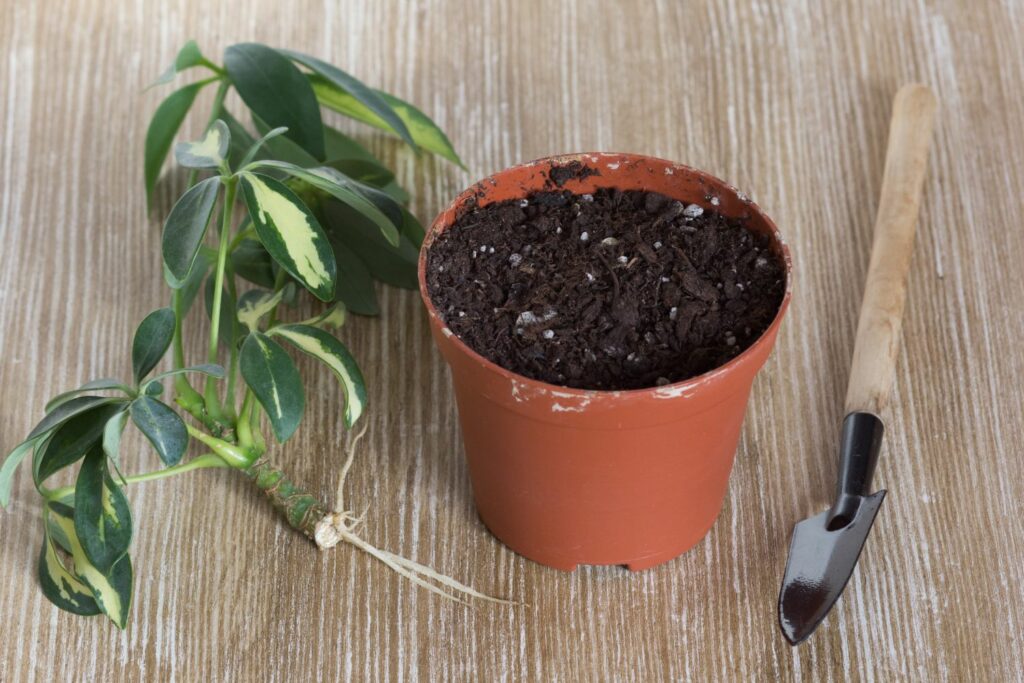
Want more umbrella trees? Good news – they’re easy to propagate! Here’s how:
- Cut a healthy stem about 4-6 inches long.
- Remove the lower leaves, leaving 2-3 at the top.
- Dip the cut end in rooting hormone (optional).
- Plant the cutting in moist potting soil.
- Keep the soil damp and place the pot in bright, indirect light.
In a few weeks, you should see new growth. Congratulations – you’ve grown a new umbrella tree!
Umbrella Tree Varieties
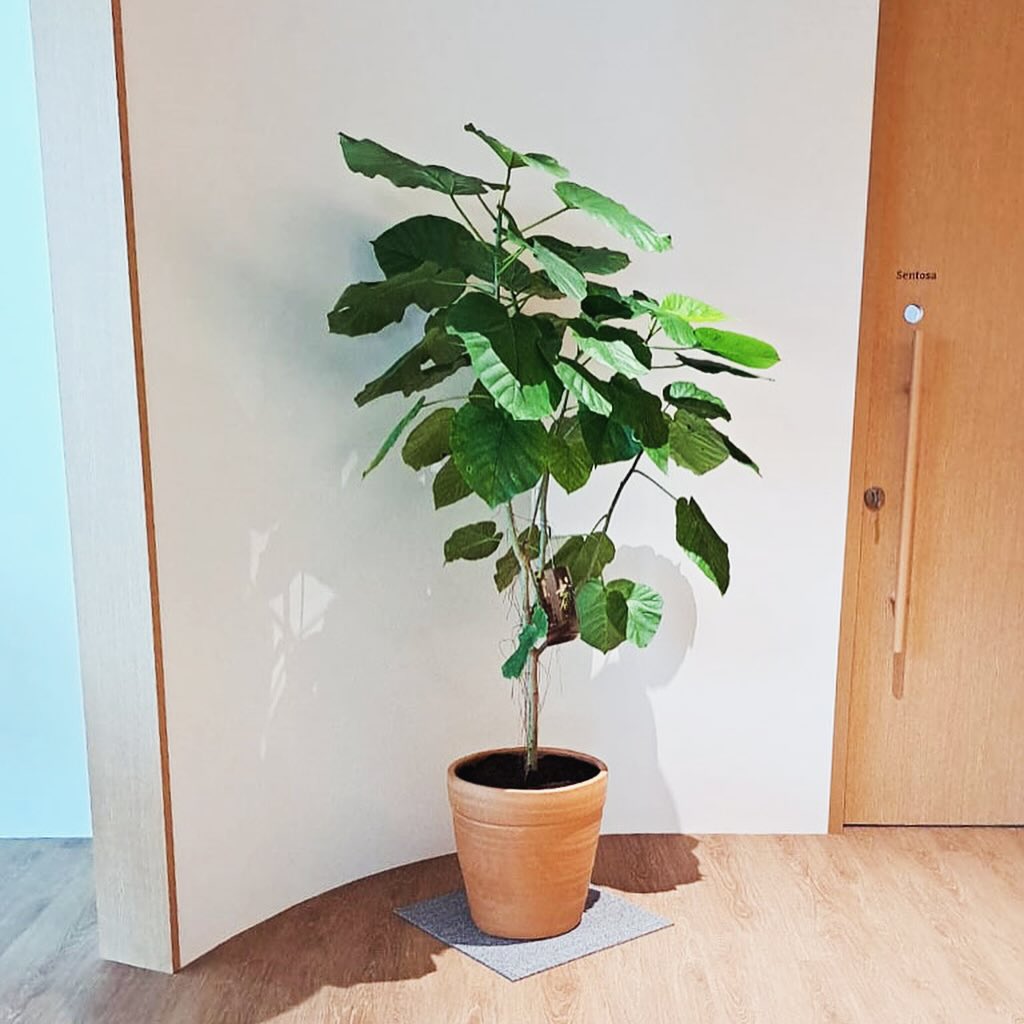
There are several types of umbrella trees. The most common for indoor use are:
- Schefflera arboricola: Also called dwarf umbrella tree. It has smaller leaves and is more compact.
- Schefflera actinophylla: The larger variety, often seen outdoors in warm climates.
- Variegated Schefflera: Has leaves with cream or yellow stripes.
Each variety has slightly different care needs, so check the specific requirements for your plant.
Umbrella Trees in Home Decor
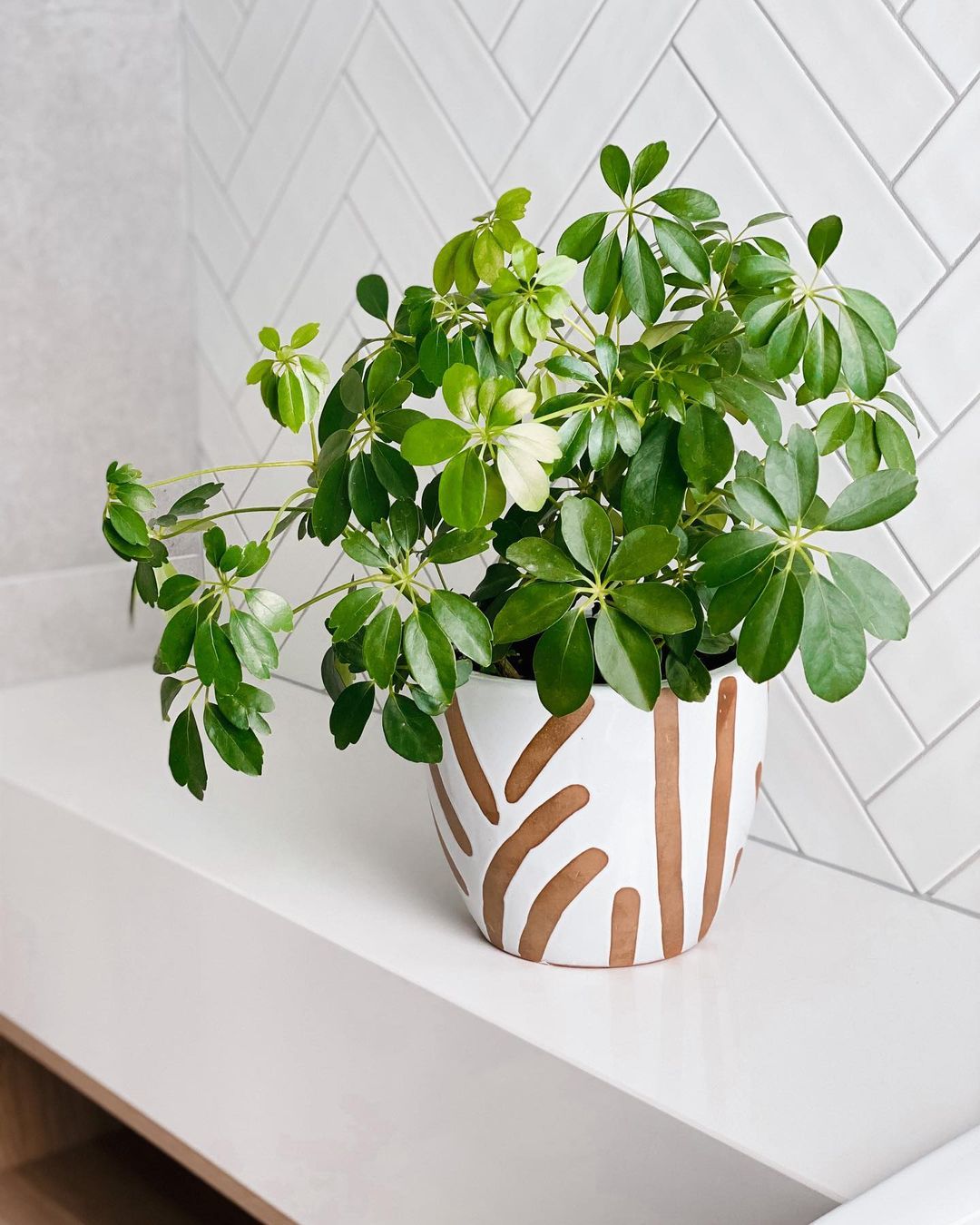
Umbrella trees are versatile in home decor. Their large, glossy leaves add a tropical touch to any room. Here are some ideas:
- Place a tall umbrella tree in an empty corner to fill the space.
- Use a small umbrella tree as a tabletop accent.
- Group several umbrella trees of different sizes for a lush, forest-like effect.
- Pair your umbrella tree with other tropical plants for a jungle vibe.
Remember, these plants can grow quite tall. Make sure you have enough ceiling height if you’re planning to let your tree grow to its full potential.
Are Umbrella Trees Safe?
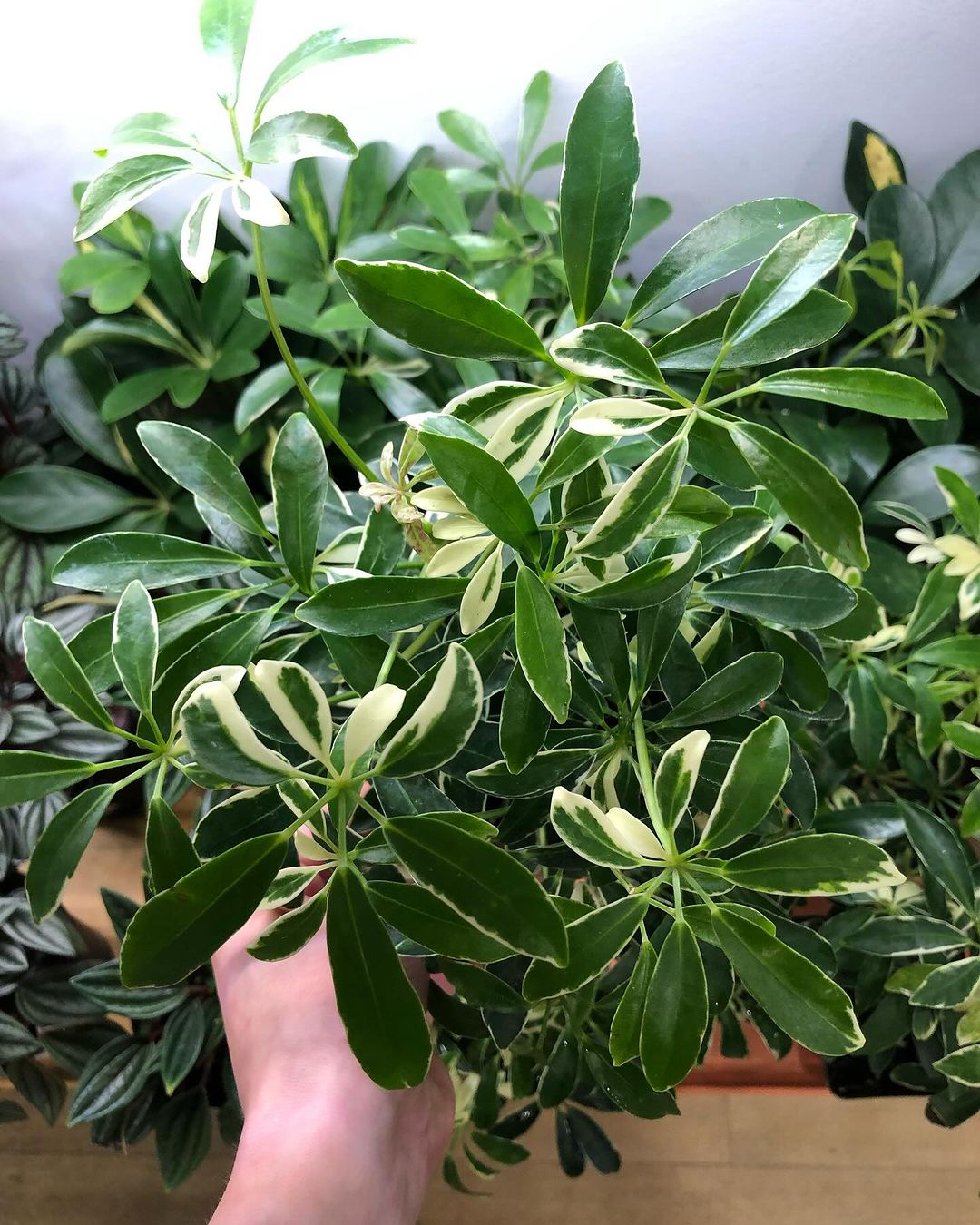
If you have pets or small children, you might be wondering if umbrella trees are safe. Unfortunately, these plants are mildly toxic if eaten. The leaves contain calcium oxalate crystals, which can cause mouth and stomach irritation.
Keep your umbrella tree out of reach of curious pets and kids. If you suspect your pet has eaten part of the plant, contact your vet.
Umbrella Trees and Air Quality
One of the best things about umbrella trees is their ability to clean the air. Like many houseplants, they absorb pollutants through their leaves. This can help improve the air quality in your home.
A study by NASA found that umbrella trees are particularly good at removing formaldehyde from the air. This chemical is common in many household products and can cause health issues.
Seasonal Care for Umbrella Trees
Your umbrella tree’s needs will change with the seasons. Here’s a quick guide:
Spring and Summer:
- More frequent watering
- Regular fertilizing
- Pruning for shape
Fall and Winter:
- Less watering
- Reduced fertilizing
- Watch for cold drafts
Umbrella Trees in Different Climates
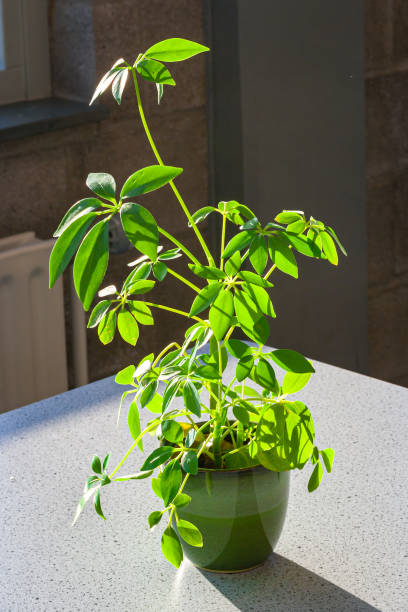
If you live in a warm climate (USDA zones 10-11), you can grow umbrella trees outdoors. They make great patio or garden plants. In cooler areas, it’s best to keep them as houseplants.
For outdoor umbrella trees, protect them from strong winds and frost. They can handle brief periods of cold, but prolonged exposure can damage or kill the plant.
Umbrella trees are a fantastic choice for both new and experienced plant parents. With their easy care needs and stunning appearance, they’re sure to become a favorite in your home.
Remember the key points:
- Bright, indirect light
- Regular but not excessive watering
- Well-draining soil
- Warm temperatures and humidity
- Occasional pruning and repotting
With these tips, your umbrella tree will thrive for years to come. Happy growing!
For more information on houseplant care, check out the University of Vermont Extension or The Old Farmer’s Almanac.
